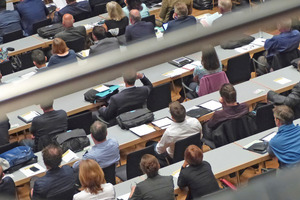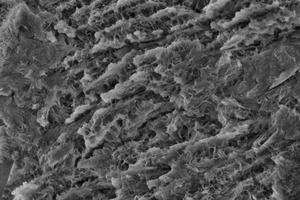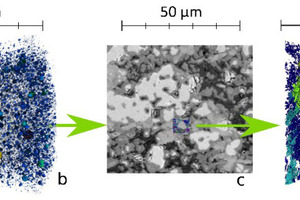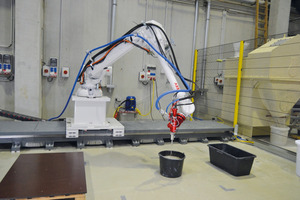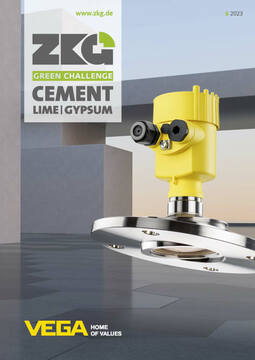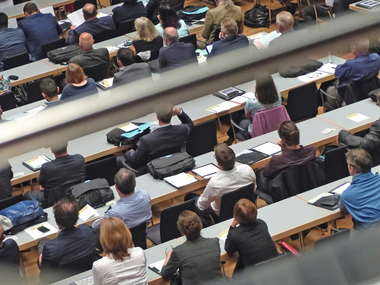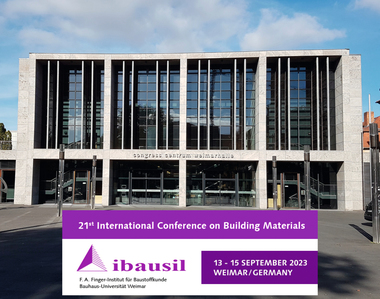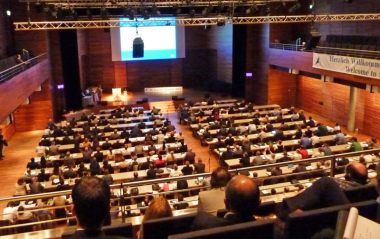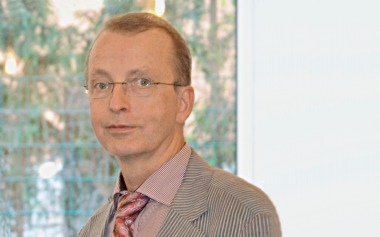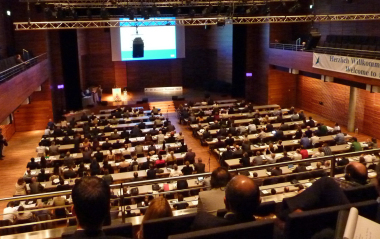ibausil 2023 – a preview
This year the 21st ibausil will take place in Weimar from 13.09.-15.09.2023. The usual 3 year cycle could not be kept this time due to corona (the last ibausil took place in 2018) and had to be extended to 5 years. This year’s ibausil continues the long history of this international building materials conference. It all started almost 60 years ago in 1964, when the 1st ibausil took place at the then University of Architecture and Civil Engineering in Weimar, with as many as 200 participants. This year, around 700 guests from more than 20 countries are expected.
As one of the largest scientific conferences on building materials, this year’s ibausil once again deals with current issues in the fields of building materials production and application. However, a look at the conference program clearly shows how the thematic focus of the conference has changed over the decades. Whereas the technical performance of the manufacturing processes and the building materials used to be a major focus of the lecture program, today there is a clear shift in the topics. The focus is now particularly on questions such as new CO2-neutral or even negative building materials and also on strategies for closing material cycles and the associated conservation of resources. And the aspect of sustainability is also always discussed in the many other subject areas.
Against the backdrop of the enormously large footprint generated by construction worldwide, this new focus is not only understandable but urgently necessary. As a reminder, construction is responsible for around 60% of material consumption on this planet and for around 35% each of energy consumption and CO2 emissions. This clearly shows that we need strong research and development in this field. In this respect, ibausil offers the ideal platform for exchanging knowledge and generating new perspectives.
In the following, some of the main topics of ibausil will be discussed in the more than 250 lectures and 45 posters.
Clinker substitution by composite material
In order to reduce CO2 emissions and achieve climate neutrality, the so-called carbon capture technology will foreseeably play a decisive role in the production of binders. In addition, the reduction of CO2 emissions in the cement industry, but also in concrete, will continue to be realized to a large extent through the use of sensible composite materials. The question is, however, which composite materials will be used in the future. Fly ash, the main substitute for cement in concrete, will be available in ever smaller quantities, assuming that the decision is taken to phase out coal-fired power generation. In the area of the most important cement substitute, granulated blast furnace slag, significant changes will also occur in the near future. Due to the transition to direct reduction, the amount of available granulated blastfurnace slag will decrease significantly. These issues will play a major role at ibausil, where there will also be a lot of talk about alternative composite materials. The focus will be on calcined clays, which are generally regarded as the composite material of the future (Figure 1). A total of 13 contributions deal with calcined clays as a substitute material for cement clinker in cement and concrete. Very different aspects of this material are considered, from production to application. In addition, a number of authors deal with different questions concerning granulated blastfurnace slag, including the question of how slags from direct reduction can be converted into a material similar to granulated blastfurnace slag.
Alternative binders without Portland cement clinker
From an ecological point of view, hydraulic binders without Portland cement clinker would certainly be a major step towards climate neutrality. However, it should not be forgotten that we currently produce around 5 billion t of cement worldwide, which would have to be replaced annually by these alternative binders. At present, it is not assumed that such an extensive conversion to clinker-free binders is possible. Rather, special applications are being discussed in which these binders can replace conventional cements not only in a quality-neutral way, but also with a gain in technical performance. At ibausil, very different approaches to clinker-free or low-clinker binders will be discussed. Most of the contributions (13 in total) will be presented in the field of geopolymers and alkali-activated binders. In addition, research results in the field of calcium aluminate and calcium sulfoaluminate materials are presented (9 papers). Relatively new are the so-called C-S-H binders, which are produced in a two-stage process (autoclave, reaction grinding) with reduced CO2 emission (3 contributions). Binder systems that no longer contain calcium oxide as the main oxide but are based on magnesium silicates also appear to be interesting (3 contributions).
Cement chemistry
The basis for the development of new cementitious binders is a deep understanding of the underlying cement chemistry. Despite decades of research, many mechanisms, especially during the hardening of hydraulic binders and composite materials, are not yet fully understood due to the complexity of the processes involved. At ibausil, 14 papers will present the latest findings in this area, with the use of ultramodern testing methods in particular providing even deeper insights into the reactions that take place and the associated microstructural developments (Figure 2).
Rheology and superplasticizers
An important focus at this year’s ibausil will be on issues relating to the rheology of cementitious systems (11 contributions) and the use of liquefying concrete admixtures (6 contributions). In a separate session on rheology, results from the DFG priority program 2005 “Opus Fluidum Futurum” will also be presented. The focus is on the understanding of the underlying processes and the evaluation of various influencing parameters. In order to improve the workability of concretes, superplasticizers of the latest generation based on polycarboxy-latether (PCE) have been available for several years. In various presentations, the effects of these superplasticizers will be discussed. In addition to basic investigations of the mechanism of action, the question of how to adapt the superplasticizer architecture to the specific application will also be discussed.
Concrete durability
Part of the sustainability of concrete construction is that the structural elements can safely maintain their assigned service life. Against this background, the durability of concretes again occupies a very large space at the current ibausil. More than 30 contributions deal with questions of concrete durability under different exposures. The topics of alkali-silica reaction (9 papers) and freeze-thaw and freeze-thaw attack (also 9 papers) are particularly well represented. In addition, new findings in the areas of carbonation (6 contributions), chloride attack (7 contributions) and sulfate attack (2 contributions) are presented.
Building materials recycling
In the current discussion about the protection of our environment, the question of resource conservation plays a central role. The construction industry is viewed particularly critically in this context due to its huge consumption of raw materials. Against this background, it is not surprising that the issue of resource conservation through the reuse of building materials at the end of their life cycle is also playing an increasingly important role at ibausil. Which separation processes can we use to produce fractions that are as pure as possible during the recycling process? How can the fractions produced be further modified to be optimally usable? What influence does the use of RC materials have on the performance of the building materials produced with them? These and other questions are addressed in a total of 16 contributions.
Recently, the importance of gypsum recycling has also been increasing. The background to this is that, with the end of coal-fired power generation, the German gypsum industry will lose around 50% of its raw material base due to the associated elimination of FGD gypsum. The issues surrounding gypsum recycling are discussed in the focus on gypsum and anhydrite, which comprises a total of 8 articles.
Modern concrete technology
The fact that concrete technology is developing at an unusual pace compared with earlier years is evident from the many different contributions on this topic at ibausil. The latest research results will be presented in the fields of lightweight concrete (6 papers), fiber-reinforced concretes (8 papers) and high-strength/ultra-high-strength concretes (3 papers), among others. Additive manufacturing will play a particularly important role at ibausil. With a total of 17 contributions, this area is extremely prominently represented at the conference. This already indicates the great potential attributed to this technology (Figure 3). However, there are still many unanswered questions to be answered before so-called 3-D printing will find its way into widespread industrial application. These include, for example, the use of lower-cement formulations, the integration of reinforcement into the printed concrete and the optimization of manufacturing processes.
In addition to the main topics explained, many other areas of building materials research will of course also be discussed at ibausil that have not been explicitly described here. In particular, the areas of cement production, plaster and mortar, clay, sand-lime bricks, repair, non-destructive testing methods, sensors/actuators and self-healing should be mentioned.
In 2023, ibausil will again be a place to present, discuss and exchange ideas on the extremely broad topic of “building materials”. All building materials enthusiasts are cordially invited to Weimar in September.

